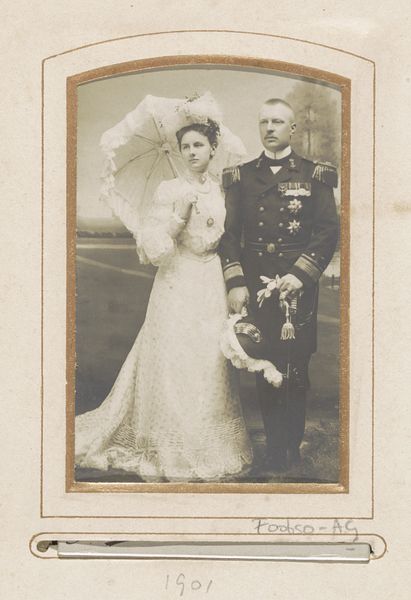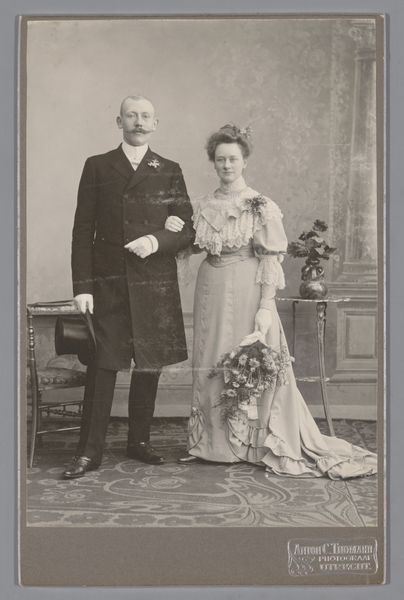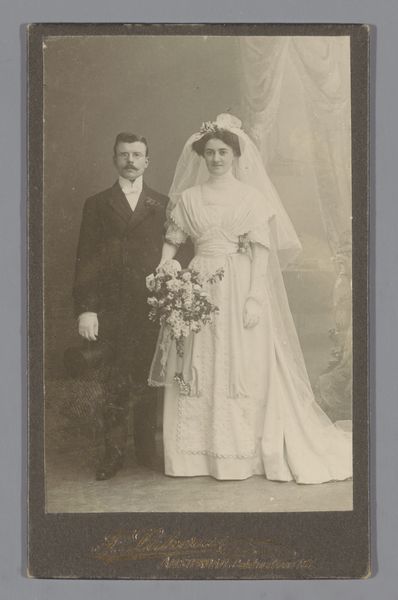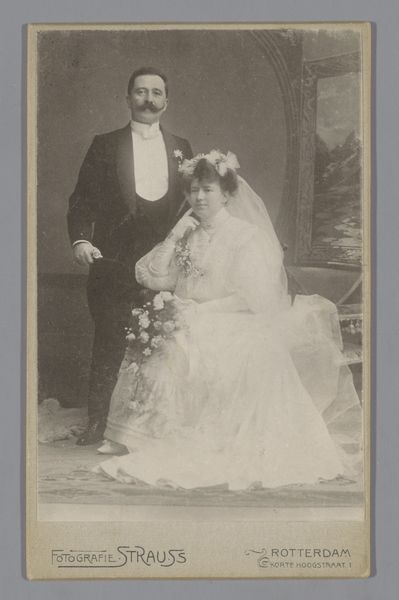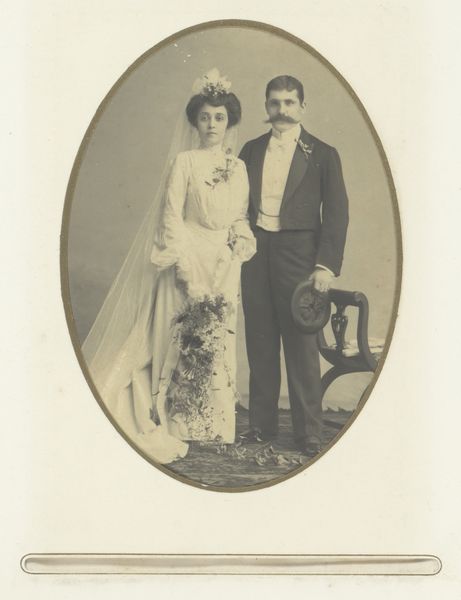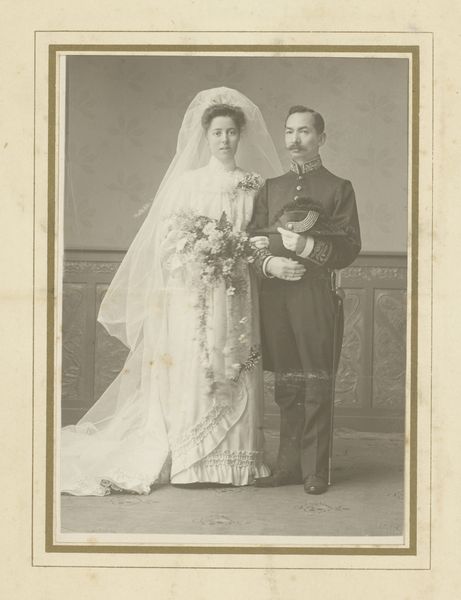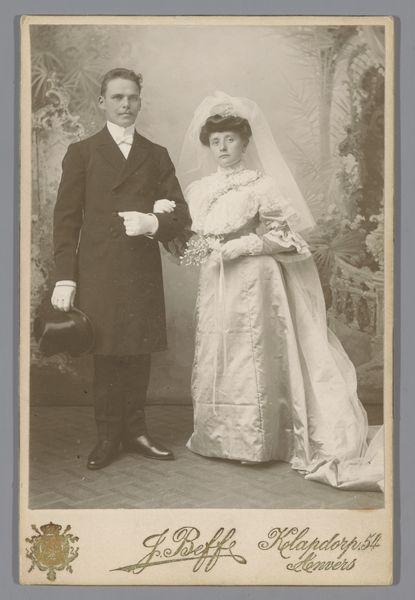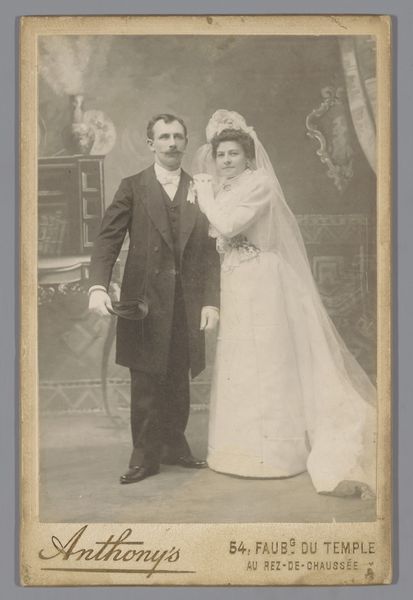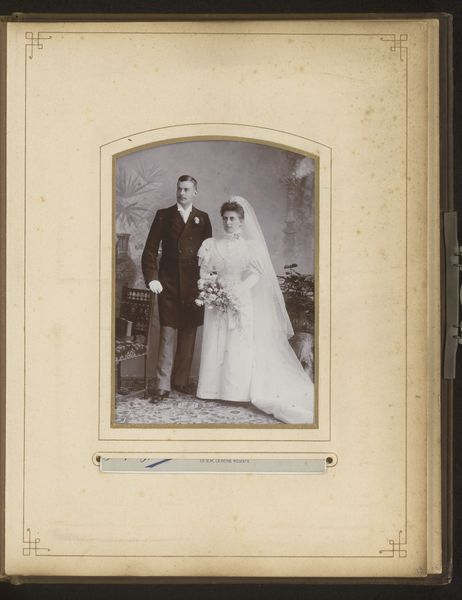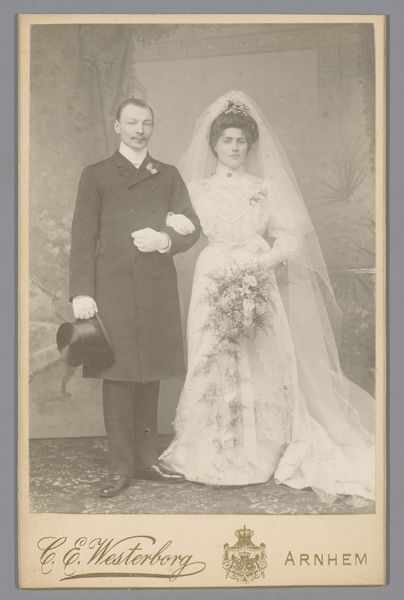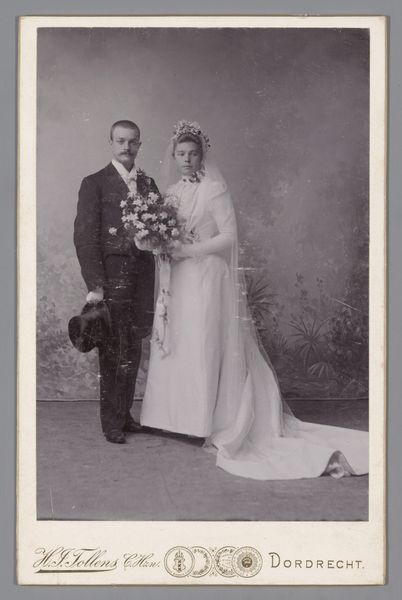
photography
#
portrait
#
photography
#
historical fashion
#
genre-painting
Dimensions: height 105 mm, width 64 mm
Copyright: Rijks Museum: Open Domain
Editor: This photograph, "Portret van een onbekend bruidspaar" from around 1870 to 1910, by T. Henry, depicts an unknown bridal couple, using the photography medium. It's a strikingly formal portrait, especially given their stiff poses and somewhat solemn expressions. What's your take on this as a historical artifact? Curator: Well, it certainly provides a glimpse into the social conventions surrounding marriage and portraiture in the late 19th century. Carte-de-visite photography, like this, became hugely popular, making portraits accessible to the middle class. This photograph acts not just as a memento, but as a display of social status, of conforming to expectations. Note the man's military attire - what does that suggest to you? Editor: That it's important. I guess, a symbol of his societal role and status. And perhaps an indication of a specific moment in that era where military service was more present in society? Curator: Precisely. Think about the socio-political landscape; nationalism was on the rise in Europe. Military service was not just a job, but a patriotic duty. This image functions as propaganda, almost, whether consciously intended or not. But it's important to remember these aren't objective records, but carefully constructed images, designed to convey a particular message about the couple. The setting and formal dress all contribute to this carefully constructed representation. It speaks volumes about the societal values placed on marriage and respectability. Editor: So, it’s less about them as individuals, and more about the ideals they represent in the eyes of society? Curator: In a way, yes. They become archetypes, embodying the expectations of their time. The photograph preserves the visible surfaces of that moment – attire, hairstyles, and photographic style. But more significantly, it embodies a complex social and political world. It’s about understanding how they chose to present themselves, or, perhaps more accurately, were *allowed* to present themselves. Editor: I see, the photo shows us so much more than the couple's image – it illustrates societal values, expectations, and even propaganda, as well as their conscious choices. Curator: Exactly! Every image, every artwork, participates in larger conversations about power, representation, and identity within its historical moment. That’s what makes it such a rich source for historical analysis.
Comments
No comments
Be the first to comment and join the conversation on the ultimate creative platform.
